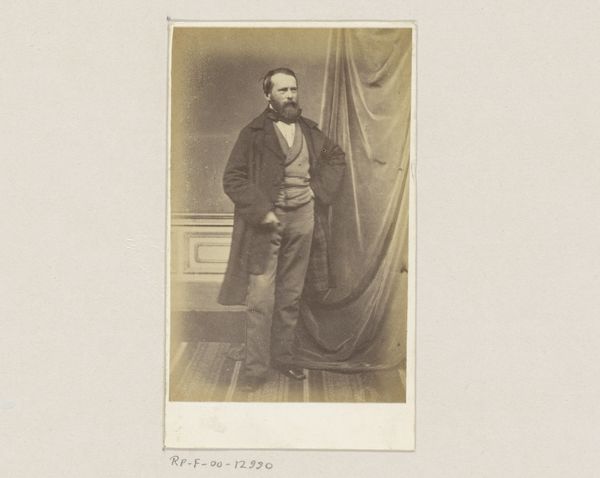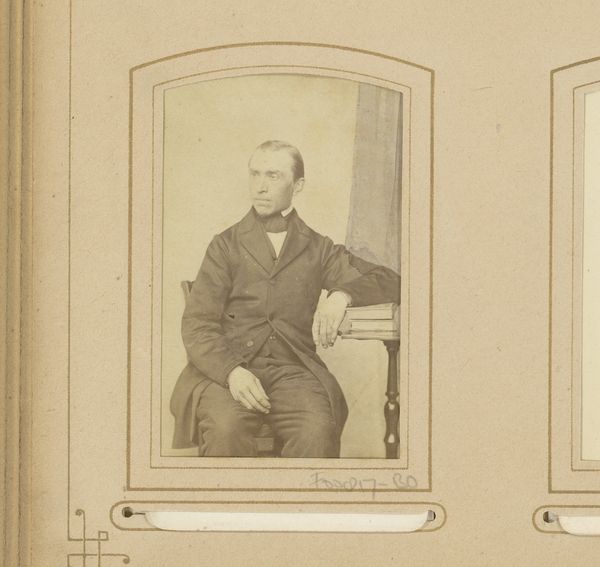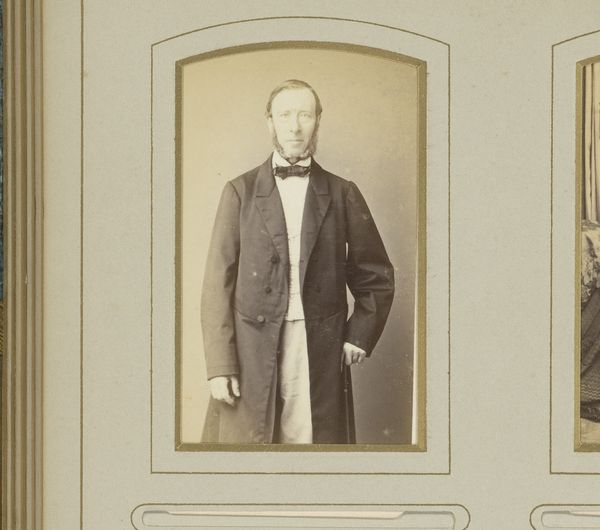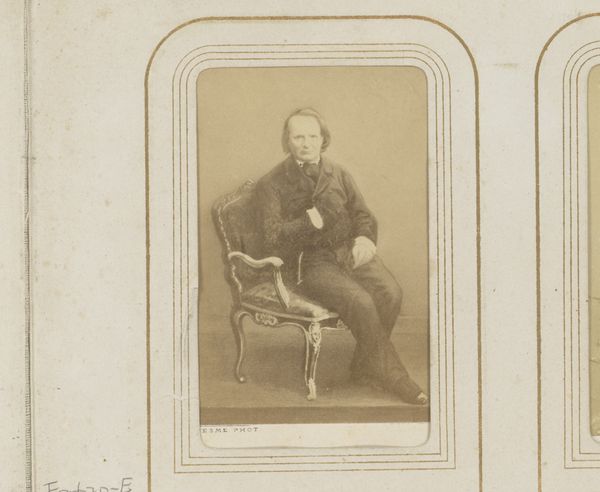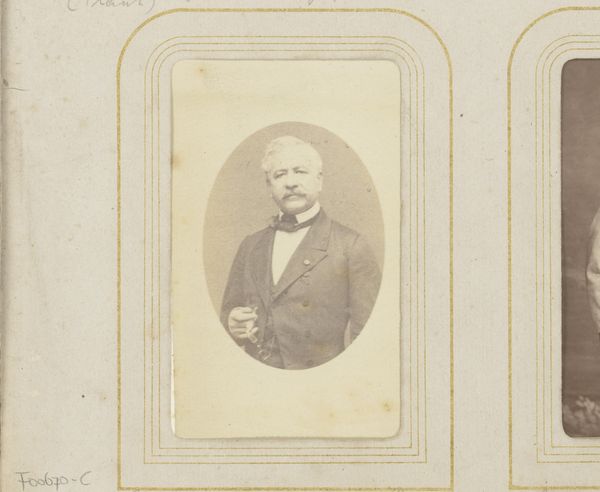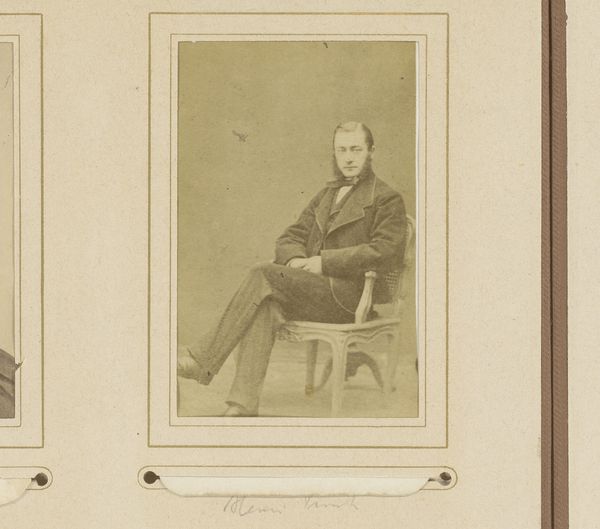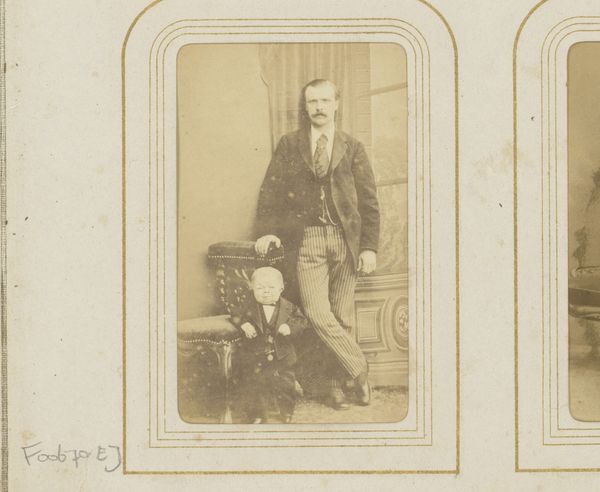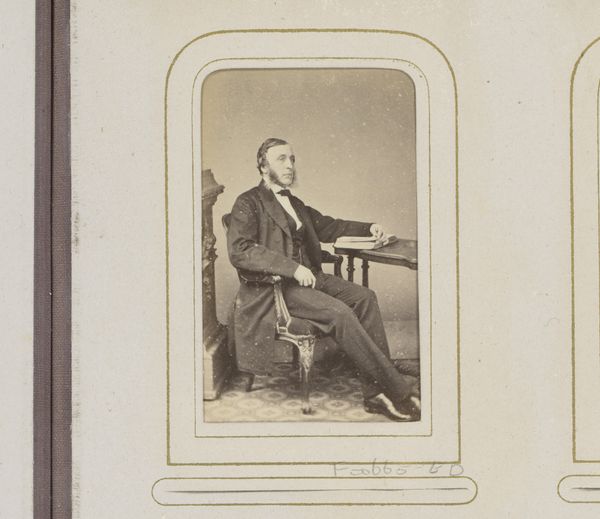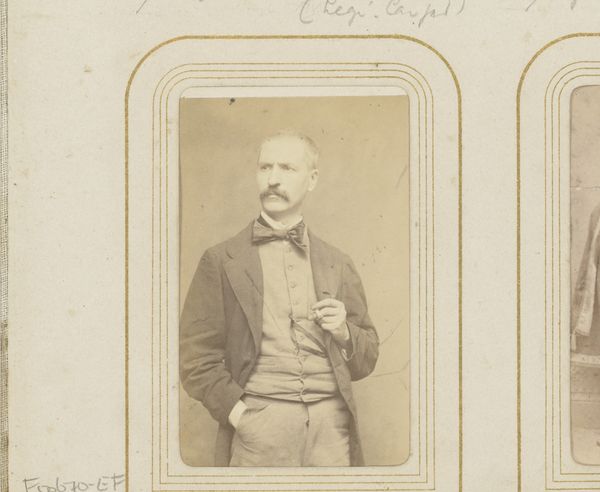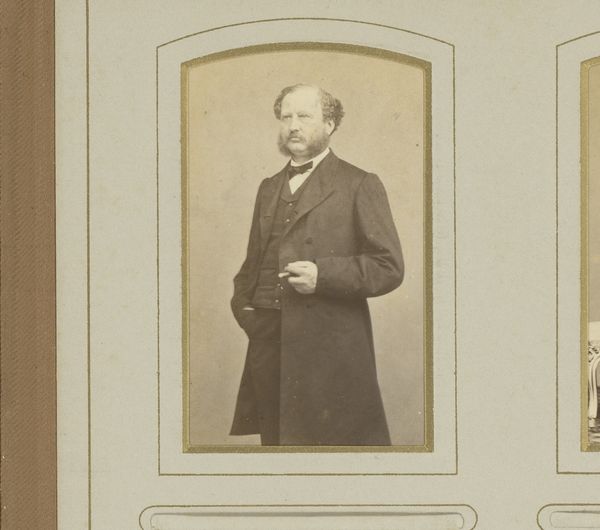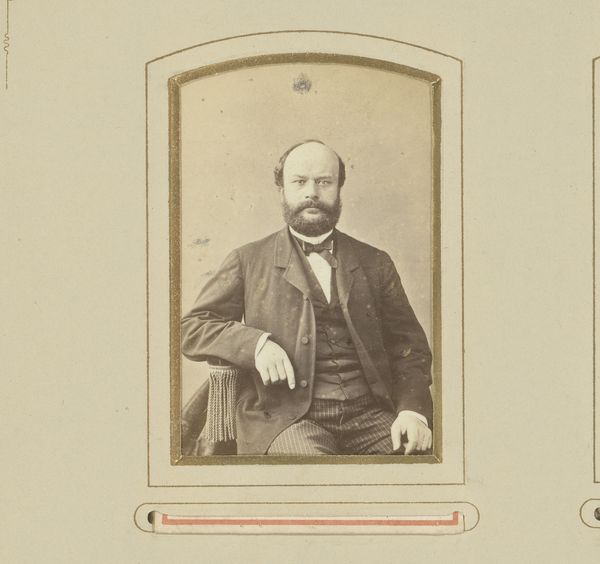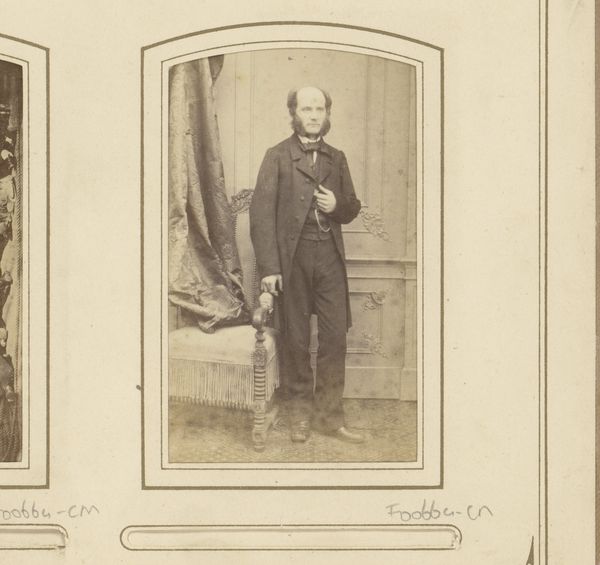
photography, gelatin-silver-print
#
portrait
#
photography
#
gelatin-silver-print
#
genre-painting
#
realism
Dimensions: height 85 mm, width 51 mm
Copyright: Rijks Museum: Open Domain
Editor: So this is "Portret van een man, leunend op een balustrade," a gelatin-silver print by Jules Géruset, created sometime between 1859 and 1874. The man looks so proper, yet his relaxed posture gives off a casual air, like he's posing for a candid shot, but I doubt they really did candid photos then. What do you see in this photograph? Curator: I see a deliberate construction of bourgeois identity within the social context of the mid-19th century. The photographic medium itself was still relatively new and becoming increasingly accessible. Therefore, commissioning a portrait was a significant act, a declaration of status and aspiration. The architectural elements – the column and balustrade – are not mere background, but actively contribute to projecting an image of stability, refinement, and classical education, commonly associated with the upper classes at the time. Editor: That makes sense. The backdrop isn’t just there, it’s telling a story about who this man wants to be perceived as. Was this common then? Curator: Very much so. The rise of photography coincided with a period of intense social stratification and anxieties about class mobility. Portrait studios flourished, offering a relatively affordable way for individuals to participate in the visual language of power and respectability. Consider also the distribution – was this for private family viewing, or for wider circulation through cartes-de-visite? The photograph's public role could extend far beyond the studio. Editor: That is so fascinating. It’s like early social media in a way, performing identity. Curator: Precisely. The politics of imagery are always intertwined with the social and technological means of production and dissemination. What are your thoughts on its relationship to Realism? Editor: Hmm. It’s not idealized, but it's certainly staged. It portrays an image the man consciously curated, making "Realism" more complex than I previously understood. Thanks, I have a new perspective on the staging of identity in photography. Curator: And I am reminded that understanding the distribution channels is vital to decode how the medium helped create social narratives.
Comments
No comments
Be the first to comment and join the conversation on the ultimate creative platform.
